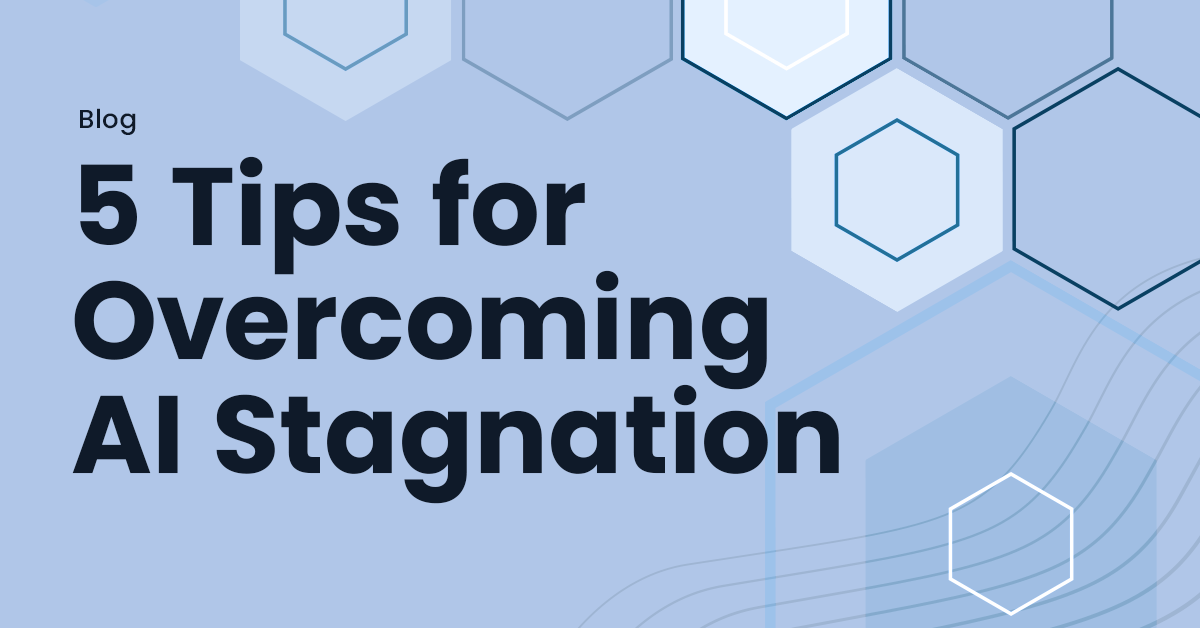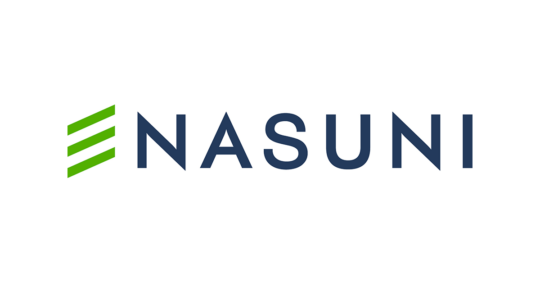5 Tips for Overcoming AI Stagnation
Nasuni’s SVP of Product Nick Burling discusses how enterprises can cut through the noise and enhance their AI strategy.
February 24, 2025 | Nick Burling

The AI washing happening in the enterprise world is maddening. Advertising campaigns make it seem as though every company on the planet is now an AI leader. On top of all this marketing misdirection, we’re overwhelmed by new and more capable models being released almost weekly. DeepSeek already feels like old news.
Here at Nasuni we help customers unify, secure, and curate their unstructured data so that it’s optimized for AI use. We are data management experts, yet we have also been working closely with customers as they try to understand how to deploy AI tools securely and effectively. While we have found that enterprise use of AI is not as widespread as advertised, the transformative potential is real indeed.
So, here are 5 suggestions for overcoming AI stagnation and advancing its use within your organization.
1. Ditch the blanket
For security reasons, many companies have instituted blanket bans on AI tools. But I’d bet that if you anonymously polled your employees, somewhere around 90% of them would admit to using AI.
Banning AI only encourages shadow IT. Plus, with a blanket ban, you lose out on the chance to understand how AI might help your organization in surprising or unexpected ways. You make it taboo for people to inform their colleagues about the small wins or details on how a tool might be useful in accomplishing some mundane or time-consuming task.
Let’s say you run a global advertising firm. One of your creative teams figures out how to use an AI Search tool to uncover archived projects relevant to a current pitch. Then they use these creative assets to develop a better proposal faster. This combination of speed and quality wins them a new account. Don’t you want them to be able to share that success with other creative teams? These kinds of productivity gains — which are now happening all the time — will never spread if they are a secret.
2. Build a sandbox
Blanket bans are no longer necessary. Today it is possible to deploy officially sanctioned and security-corralled AI tools with the appropriate governance and controls. How do you build an enterprise-approved sandbox? Pick a few tools, get your security leaders to put the proper wrappers around them, configure the models so they can’t train on your data, and then encourage widespread use. By experimenting freely, your employees will uncover unexpected benefits.
The other advantage of the enterprise-approved sandbox is that you’ll be able to retain any related IP. Let’s say one of your employees wants to explore a subject relating to a customer’s business. If you have a blanket ban on AI, she might slip outside the corporate network and interact with an LLM, asking questions and bouncing around ideas as she would with a colleague. Once she’s done, however, those ideas are not your organization’s property.
If you’ve sanctioned AI apps, then all that back and forth becomes IP retained within the business. She could add colleagues to the brainstorming session as well. These rich interactions become company property that other employees can access and build on.
3. Demand real results
As more employees test approved tools, it’s essential to track the results. A level of play should be encouraged, but it should all be focused on productivity and real, measurable gains. Institutionalize regular check-ins and reports to capture anecdotal feedback, too. You should work to understand how people feel these tools are impacting their daily work and interactions with colleagues.
You’re not running an AI marketing campaign. Your goal is to find out what actually works for your business. If something isn’t making a positive impact after a predetermined time, move on. Pour your efforts and resources into another AI tool instead.
4. Track AI with AI
The waterfall of information can be completely overwhelming, but at any moment, a new tool might emerge that is perfectly suited to the needs of your organization, so you do need to track AI news. Subscribing to a few AI-focused newsletters, especially any that specialize on your industry, is one easy way to do so.
Another trick is to use AI itself to monitor developments. If someone suggests an interesting podcast or video lecture on new trends, utilize AI tools to summarize the content to save yourself time. That summary might not be perfectly accurate, as AI engines are prone to hallucination, but it will alert you to solutions or ideas that might be worth a deeper dive.
5. Focus on your data
Finally, you need to get your data fit for AI. This is an admittedly self-serving tip, coming from Nasuni, but it’s an essential one. The output of any model is only going to be as strong as the data you feed it. Regardless of which AI solutions your organization deploys, you are going to need to consolidate, secure, and curate your data if you hope to generate the best possible results from those tools.
For additional information on how Nasuni can help you get your data fit for AI, learn more here, or reach out to your account representative.
Related resources

Data foundation for AI
Nasuni’s hybrid cloud platform capabilities enhance your AI data strategy through consolidating, understanding, and leveraging your data.
Learn more
White paper
Transforming Unstructured Data Chaos into AI Order
A robust data strategy is crucial for AI adoption in businesses. This whitepaper offers a framework to centralize data, ensuring validity and security for…
Learn more
January 20, 2025 | Lance Shaw
What Will CIOs Prioritize in 2025?
Nasuni Product Marketing Director Lance Shaw discusses Gartner’s recent 2025 CIO Priorities report, and what it means for global enterprises.
Read more